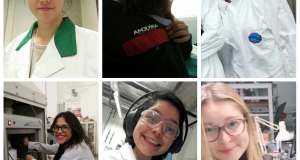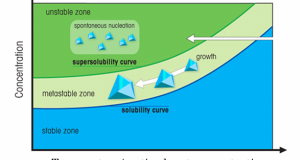– Gerardo de Leon, Microinnova I recently joined Microinnova, one of the leading companies in continuous chemical processing and process intensification with 15 years of experience in this field. Microinnova offers process development and plant engineering by applying flow technology. The company provides services regarding the conversion of processes from batch to continuous manufacturing, does feasibility studies on continuous lab plants, ...
Read More »Blog
Time to Celebrate Women in Science!
11 February! Today we celebrate the International Day of Women and Girls in Science, declared by the United Nations (resolution A/RES/70/212), as a way to achieve gender equality and empowerment of women and girls in science. UN Secretary-General, António Guterres, said “We need to encourage and support girls and women achieve their full potential as scientific researchers and innovators.” From ...
Read More »A Fluid with a Hole?
– Dwayne Stephens, University of Göttingen Strong sound waves, such as ultrasound, in a liquid produce bubbles by rupturing the liquid, resulting in an effect called acoustic cavitation1. But to understand this phenomenon more clearly we must first understand the physics behind a single cavitation bubble. To do so we look at a problem posed by W. H. Besant in ...
Read More »Why use a Microreactor for Chemical Processes?
– Claire Delacour, KU Leuven The Microfluidic domain has known important development over the last two decades. In 1990, only less than 10 patents were published whereas in 2004 more than 350 patents were published in the USA[1]. This study showed the large range of microfluidic applications, and impacts in Biology and Chemistry. A microchannel reactor is a continuous flow-type ...
Read More »Weber Ultrasonics – Ultrasonic Partner Company
— Ana Luisa Maria, University of Torino, Arkema Ultrasounds is an emerging technology with many applications in different industrial sectors as Ekim Sarac explains meticulously in her blog. Weber Ultrasonics based in Germany, rises from the necessity of innovation in industrial application spectrum of ultrasound technology. The company is focused on the development of potential uses and processes by expanding ...
Read More »Microwaves: it’s about what you’re made of
— Fabio Cameli, KU Leuven I recently read a tweet saying: “The same boiling water that softens the potato hardens the egg. It`s about what you`re made of not the circumstances”. Actually, microwave technology is essentially based on the same concept: different materials will behave differently under a microwave field resulting in what is called “selective heating”. In fact, it seems ...
Read More »Biorefinery: a glance at the past through present knowledge, for a COSMIC future
— Alessio Zuliani, University of Cordoba One of the most captivating reply to the challenge for substituting fossil sources, is the employment of renewable bioresources through new sustainable processes.1 Truthfully the exploitation of biomass can potentially satisfy a variety of needs, including generating electricity, heating homes, fueling vehicles and provide raw materials. Until the middle of 20th century, many industrial materials ...
Read More »Ultrasound and its Applications
— Ekim Sarac, University of Göttingen Sound is a waveform consisting of density variations in a medium (such as gas, liquid or solids) propagating away from the source. The immediate property of sound is its frequency which is mostly measured in cycles per second, or hertz (Hz). Hertz, equal to the reciprocal of second, is the unit of the frequency. Sound ...
Read More »Catalysts: A Pathway for Sustainable Development
— Prabhat Ranjan, KU Leuven We all have encountered the word “catalysis” during our high school chemistry. Catalyst is a substance which can accelerate the kinetics of a reaction without getting chemically involved in it. Ultimately, first question which arises in our mind is “ How does this happen?” In order to understand the behavior of catalyst, let me take you ...
Read More »Interdisciplinary Aspects of Continuous Sono-Chemical Pharmaceutical Crystallization
—Mohammed Noorul Hussain, KU Leuven The pharmaceutical industry that is leading a $1000 Billion worldwide market, is looking forward to a new future with the use of techniques like ultrasound. Ultrasound can potentially increase nucleation rates that will reduce the production time. Also, as the industry is fast moving towards continuous crystallization by replacing the existing cumbersome batch reactors, isn’t it ...
Read More »










